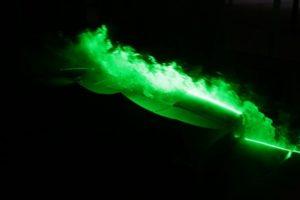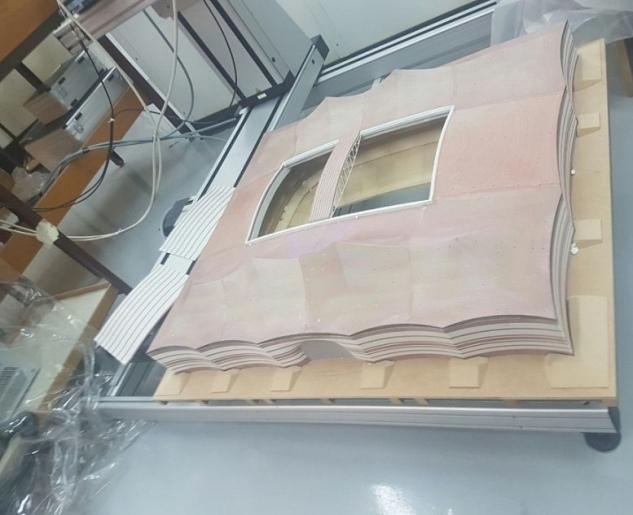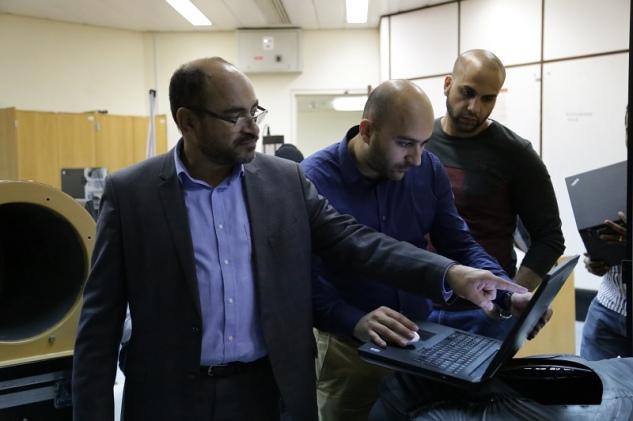 We’ve seen, and written about, many cases of architects turning to 3D printing to generate models of planned buildings. The benefits are numerous – 3D printing produces models much faster and more cheaply than traditional handcrafting; changes and revisions can easily be made; and the level of detail that’s possible with 3D printing far surpasses that of which can be created with other methods. Now researchers in Qatar are taking the potential of 3D printed models to new levels.
We’ve seen, and written about, many cases of architects turning to 3D printing to generate models of planned buildings. The benefits are numerous – 3D printing produces models much faster and more cheaply than traditional handcrafting; changes and revisions can easily be made; and the level of detail that’s possible with 3D printing far surpasses that of which can be created with other methods. Now researchers in Qatar are taking the potential of 3D printed models to new levels.
The College of Engineering at Qatar University is hard at work on several 3D printed scale models of the future stadiums to be built for the 2022 FIFA World Cup, which will be hosted by the country. Beyond assessing the aesthetic and logistical properties of the models themselves, the researchers are also putting them through a series of tests to determine how to best construct the stadiums for optimal cost efficiency and environmental benefit.
It took the researchers seven months to design and construct a wind tunnel – the first of its kind in the region – into which a 1:300 scale model is placed. Once inside, a series of laser beams capture the flow of air over and through the miniaturized stadium, and the measurements gathered are then processed by sophisticated analytics software that tells the researchers everything about the air inside the structure, down to the smallest detail.
“We can see the temperature per tier, add in variants such as sweat produced and amount of spectators, and then run the simulation and see effect of temperature inside stadium,” said Dr. Saud Abdul Aziz Abdu Ghani, a professor at the College of Engineering. “For cooling we want a minimal amount of air to go in, and we want the air inside to stay there. We can change the direction and simulate different wind directions at this facility.”
The team has run the simulations on models of already-existing stadiums as well as those yet to be built. A total of nine new stadiums will be built for the World Cup, and three existing ones will be renovated. Qatar’s plan is for the facilities to be climate-controlled with a zero carbon footprint by taking measures such as reducing warm winds and solar radiation, as well as providing soft air conditioning. It’s a big task, to say the least; according to Qatar Travel Online, measures like these have never been implemented on stadiums of this size.
The stadium models, which take about a week each to print according to Dr. Ghani, are printed in pieces and then assembled before they go into the wind tunnel. So far they have tested two stadiums and a fan zone, and a third model is currently being printed. The researchers are working closely with the Technical Delivery Office at the Supreme Committee for Delivery & Legacy (SC), who will be using the findings to implement engineering changes to the stadiums’ construction.
“We’ve done a lot of work with QU’s team and made aerodynamic changes to our stadiums as a result,” said Yasir Al Jamal, Vice-Chairman of the Technical Delivery Office. “This creates a lot of saving through value engineering. They also look at the roof structure to minimalise the amount of steel, which will reduce energy and capital costs, and reduces the effect on the environment. In effect we are minimising the effect on the environment, as well as the cost and the operational cost.”
The wind tunnel was entirely designed and constructed in Qatar, with the exception of the fan, which was produced in Germany. Other countries are already taking note of the work being done at Qatar University, and some foreign architects have even traveled to the university to use the technology for their own projects. Designers from one of Belgium’s largest football stadiums recently came to test their design aerodynamics, according to Dr. Ghani; their objective was to find ways to reduce the amount of wind-driven rain coming into the stadium.
“I believe this is the future of the stadium design industry,” Dr. Ghani said. “Testing used to be done on clay models, but this technology is now at the forefront of stadium design and is also being used for high-rise buildings in Qatar instead of sending them for aerodynamics testing in Canada or Germany as was previously done. You can print anything from cars to skulls for reconstructive surgery, using different materials including metal, titanium, and aluminium.”
He adds:
“I am glad that I started working with the SC, because they are really looking for legacy on their projects and this wind tunnel is already helping to leave one for stadium design of the future across the world.”
How do you see this affecting the stadium industry? Let’s discuss further over in the 3D Printed Stadium Designs forum over at 3DPB.com.
[Source/Images: Supreme Committee for Delivery and Legacy]Subscribe to Our Email Newsletter
Stay up-to-date on all the latest news from the 3D printing industry and receive information and offers from third party vendors.
You May Also Like
3D Printing Webinar and Event Roundup: April 21, 2024
It’s another busy week of webinars and events, starting with Hannover Messe in Germany and continuing with Metalcasting Congress, Chinaplas, TechBlick’s Innovation Festival, and more. Stratasys continues its advanced training...
3D Printing News Briefs, April 20, 2024: Manufacturing 4.0 Consortium, Blow Molding, & More
We’re starting with news about a manufacturing consortium in today’s 3D Printing News Briefs, as OPEN MIND Technologies has joined the Georgia Tech Manufacturing 4.0 Consortium. Moving on, industrial machining...
3D Systems Brings 3D Printed PEEK Cranial Implant to the U.S. with FDA Clearance
For more than 10 years, 3D Systems (NYSE:DDD) has worked hand-in-hand with surgeons to plan over 150,000 patient-specific cases, and develop more than two million instruments and implants from its...
Lockheed Martin Leads $3M Investment in Q5D’s Electronics 3D Printing System
Q5D, an original equipment manufacturer (OEM) of robotic arm, hybrid additive manufacturing (AM) systems used for wire harness production, has closed a $3 million investment round. The investment arm of...

































